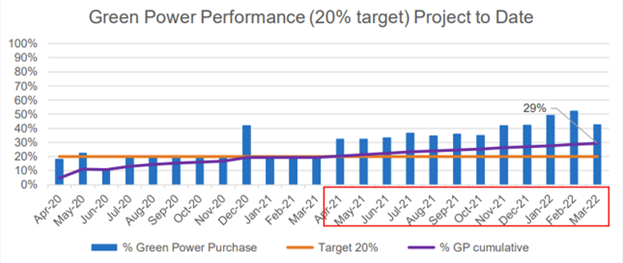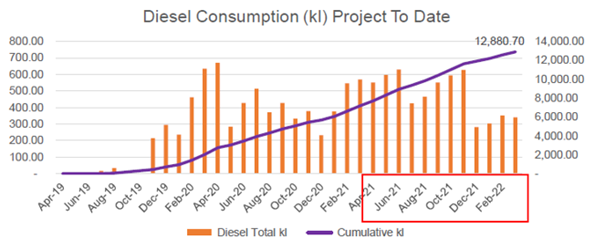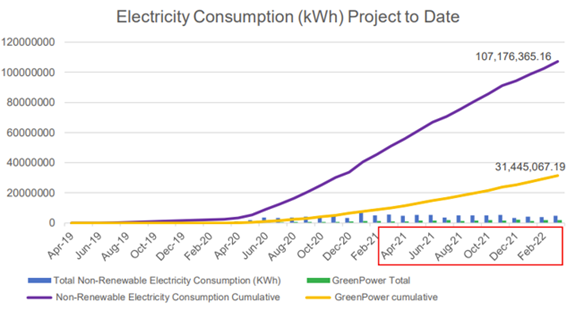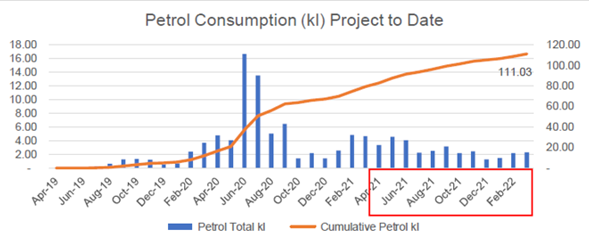 Energy
Energy
Electricity and fuel consumption
| Project Targets | |
|
|
|
| Performance | |
|
|
Implementing sustainability in design has the greatest potential to reduce energy consumption over the life of the asset as over a 50-year period, 95% of greenhouse emissions related to the project can occur during the operational phase. During the tender, several opportunities to reduce operational energy and GHG emissions, including renewables, were identified:
Construction measures and initiatives to reduce energy consumption include:
Although the Project has a target to utilise 20% Green power during construction, JHCPB has exceeded the target by utilising 29% Greenpower to date. During the period, the number of operating road headers reduced from 23 to 3 as excavation targets have been achieved. However, energy consumption from ventilation and lighting has increased as the expanse of excavated tunnel requiring ventilation and illumination has increased. The electricity used to date represents 55.9% of the total estimated electricity consumption for the construction phase of the Project, lower than projected. This is in part due to the delay in tunnel electricity set up for excavation. Tunnel electricity (the largest energy consumer in the Project) was initially provided via diesel generators until March 2020. The first graph illustrates the monthly breakdown of electricity consumption across the Project based on invoicing date. The review period is outlined in red. The second graph highlights GP performance. Electricity consumption on the Project PTD
Green Power Purchase Performance 2021-2022  Fuel
Fuel usage is also an important contributor to the consumption of energy and generation of greenhouse gas emissions. The Project’s fuel consumption is tracked in accordance with the National Greenhouse Gas and Energy Reporting Act 2007 (NGERs) via a digital platform for subcontractor reporting (Project Pack Web). The Project has identified a partial transition to biodiesel as a potential opportunity over the next reporting period to reduce CO2e emissions associated with diesel consumption. This would involve replacing a portion of diesel purchased on the Project with B5 biodiesel (95% diesel, 5% biofuel). Biodiesel is considered a greener and safer alternative to pure diesel. Monthly and cumulative consumption of Diesel and Petrol are presented in the graphs bellow. Fuel consumption on the Project - Diesel PTD  Fuel Consumption on the Project-Petrol 2021-2022
|



